Naviculavolva kurziana (Cate, 1976)
Kurz' egg shell,
17mm
Naviculavolva kurziana
is relatively common in the Marshalls. It is found exclusively on the gorgonian
Rumphella, which is often erroneously called "black coral"
here in the Marshalls. Rumphella is definitely a gorgonian (soft coral)
and is quite distinct from true black corals. Naviculavolva
kurziana and two look-alike species, N. deflexa and N.
malaita, all feed on Rumphella. During the day, they usually
hide in holes or tufts of algae and debris around the base of the gorgonian,
coming out onto the branches at night to feed. We long considered all the little
egg shells living on Rumphella to be the same species, but have been
informed by experts in the group that there are indeed three different species.
N. deflexa differs externally in having an orange or yellow line circling
around the lower sides of the shell, just above the base. N. malaita
has a shell that is finely striated; the other two species are smooth. We have
seen no studies on the animals' anatomy or biochemistry (DNA) to confirm or
deny these differences, but for now we are keeping them separate. Although we
seem to have photos only of N. kurziana and N. malaita, we
have seen all three species, sometimes intermixed on the same colony of Rumphella.
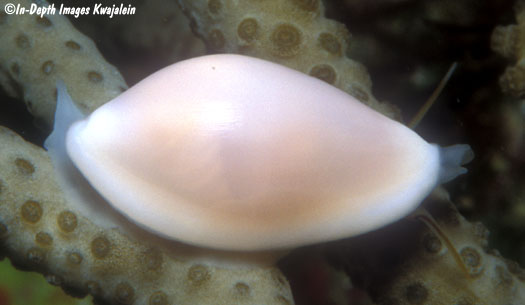
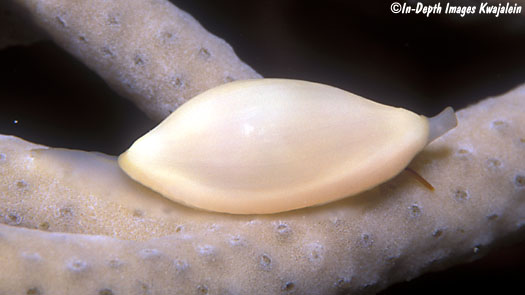
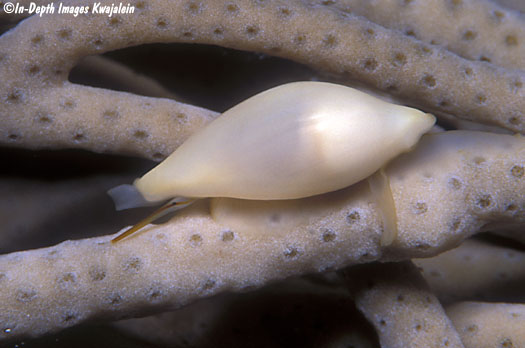
The two specimens below are flanked
by the spiny arms of a brittle star. The black patch on the thick gorgonian
stalk just above the larger shell is the gorgonian's black skeleton showing
through where the brown tissue has been grazed away by the mollusks.
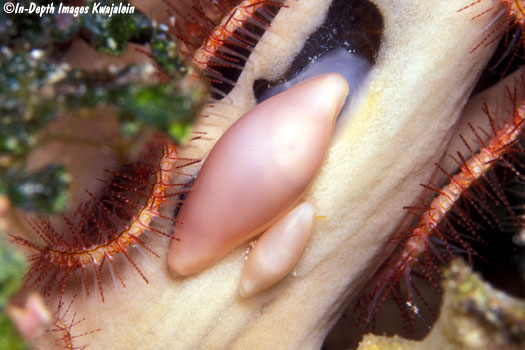
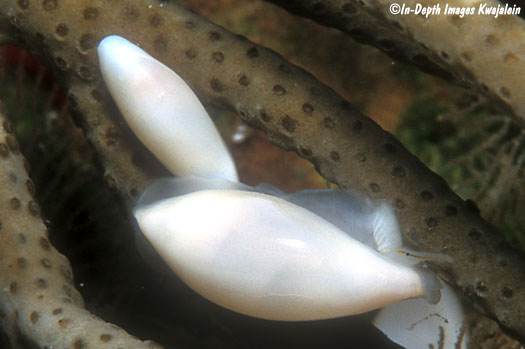
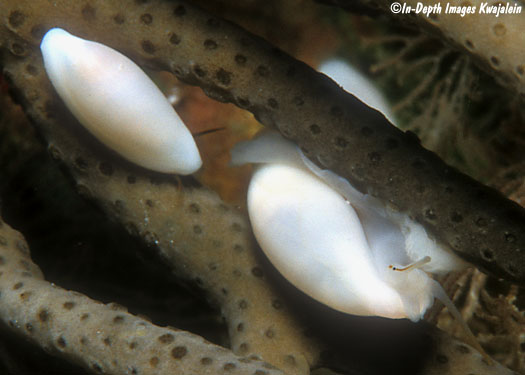
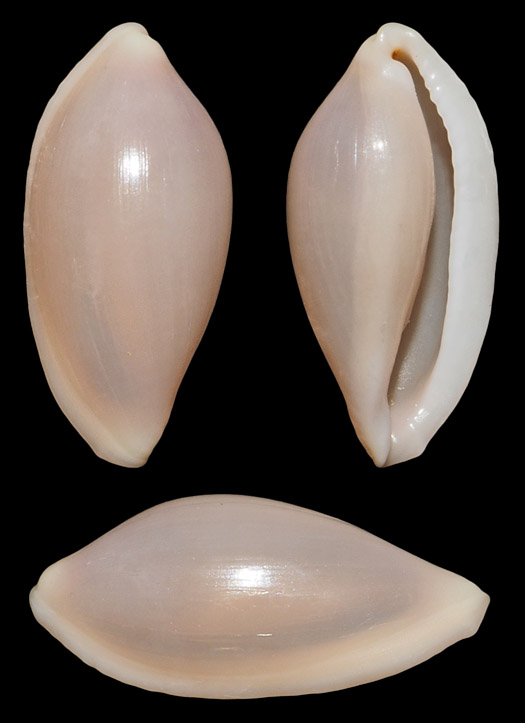
Created
22 September 2008
Updated 23 March 2020
Return
to ovulid list
Kwajalein Underwater home







